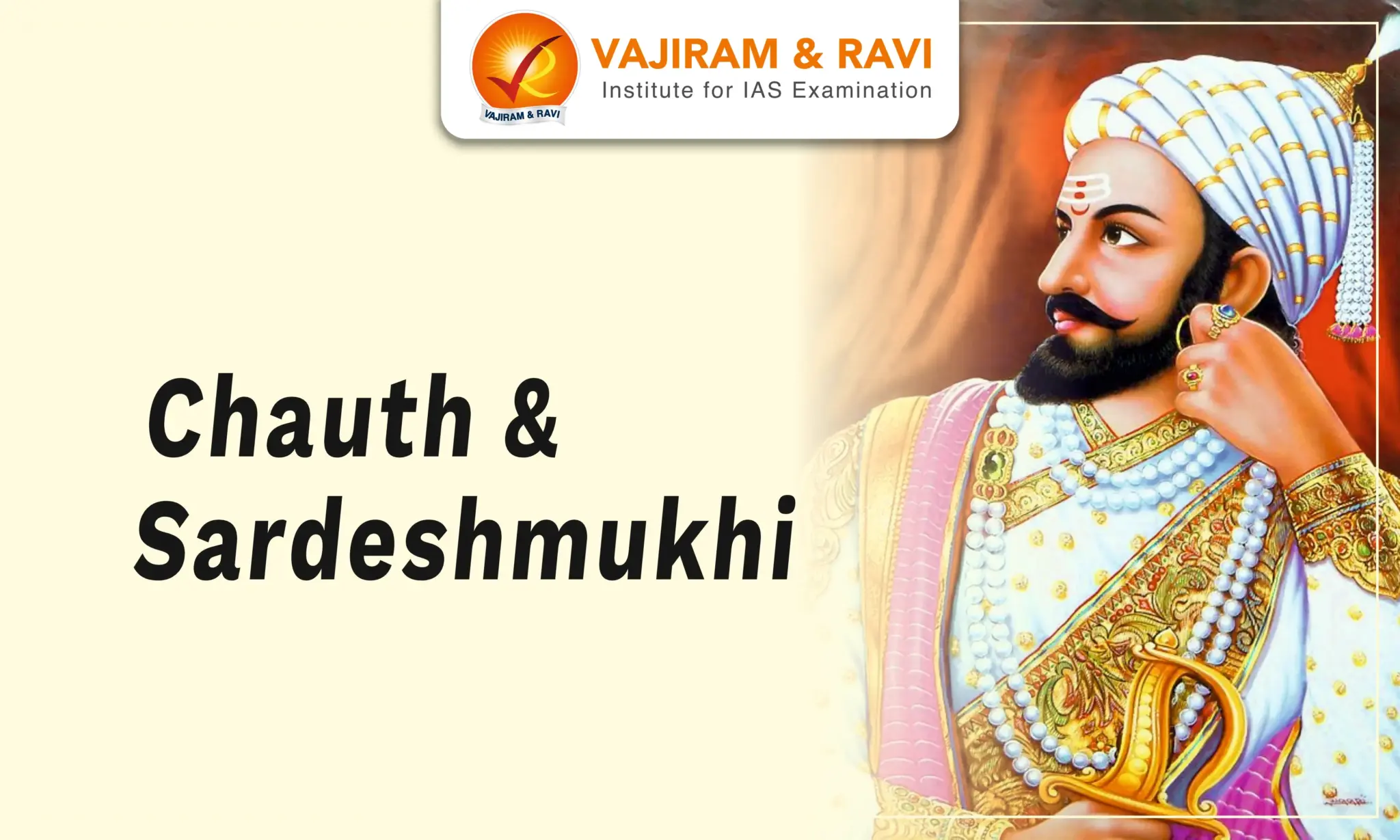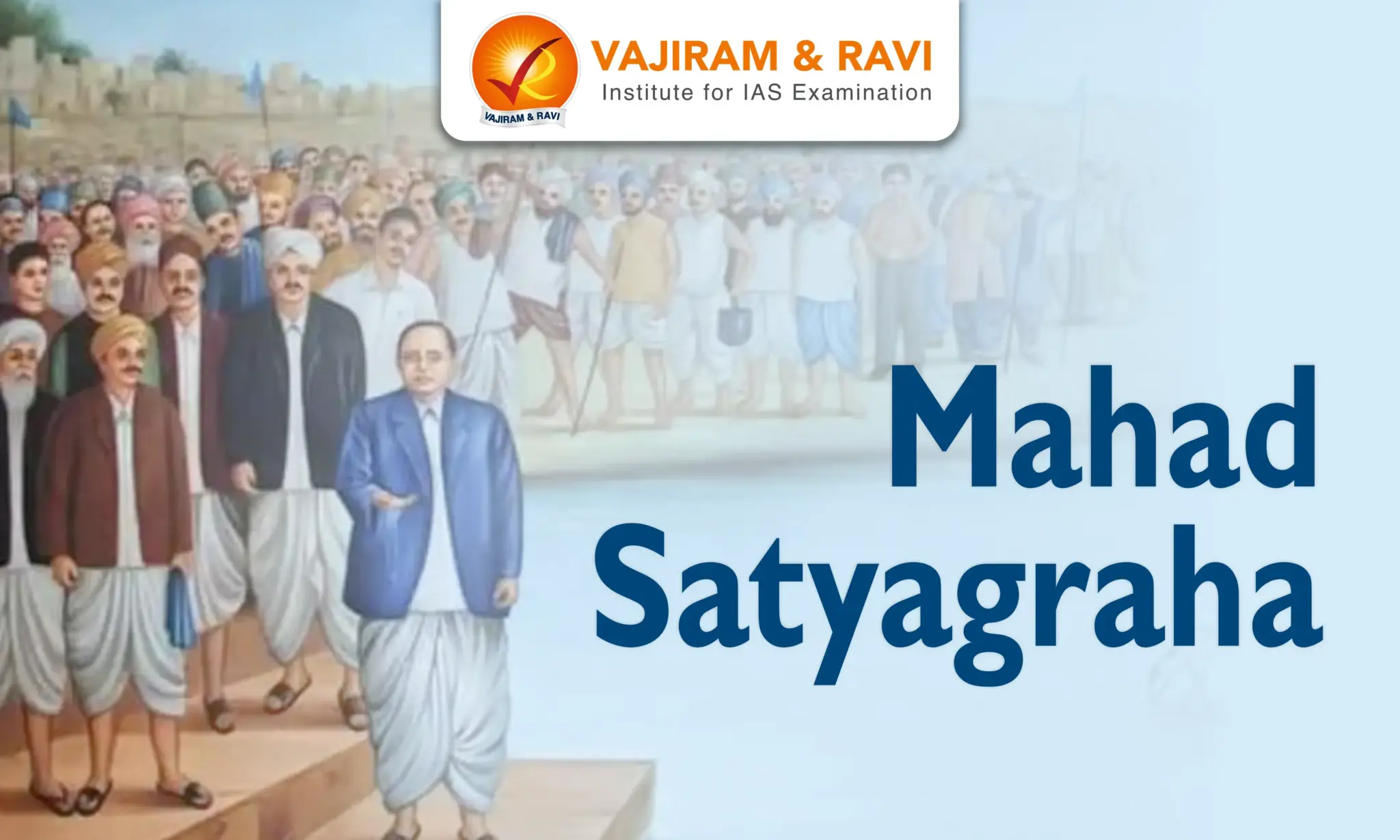Chauth and Sardeshmukhi functioned in the Mughal provinces of the Deccan, establishing a dual land revenue administration, and were levied by the Maratha Empire in the early 18th century. Chauth was an annual tax amounting to one-fourth of the total revenue while Sardeshmukhi, collected by Shivaji at a rate of one-tenth of the total revenue, was a levy assessed in addition to the Chauth.
Together, these taxes provided the Marathas with a reliable and substantial source of income. This financial support enabled them to expand their influence beyond Shivaji’s realm, strengthening their position in the region.
Chauth and Sardeshmukhi Background
Chhatrapati Shivaji conducted two raiding expeditions in Surat, a city within Mughal territory between 1664 and 1670. These attacks gave rise to a unique source of revenue known as "Mulkgiri" (looting expedition into the foreign land ).
- The concept of Mulkgiri was initially brought to India by invaders like Muhammad bin Qasim, Mahmud Ghazni, and Muhammad Ghori.
- For the Marathas, it served as a way to generate revenue from outside their territories.
- Chhatrapati Shivaji recognized that relying on plunder was not a sustainable approach for his governance. He replaced this method with two established taxes known as Chauth and Sardeshmukhi.
- Moreover, the Portuguese also paid these taxes to the neighbouring kings in their regions to prevent disputes.
Chauth and Sardeshmukhi Under Shivaji
Following Shivaji's escape in 1666, tensions with the Mughals diminished, with Mughal Sardar Jaswant Singh facilitating peace negotiations between Chhatrapati Shivaji and Aurangzeb. During this time, Aurangzeb permitted Shivaji to attack Bijapur, which was under the weakening Adil Shahi dynasty. Sultan Ali Adil Shah II, recognizing his vulnerable position, sought peace and subsequently granted Chhatrapati Shivaji the rights of Sardeshmukhi and Chauth.
- The Chhatrapati Shivaji received one-fourth of the levy and also had authority over the Nadgauda, which accounted for 3% of the total revenue collected.
- Further, Pant Sachiv ( chief of the royal secretariat ) received 6% of the Chauth collections.
- The Chauth along with Sardeshmukhi provided a consistent and substantial source of income for the Marathas and helped raise enough funds to pay troops.
- This dual land revenue administration had major political effects and caused widespread economic changes in the Mughal Deccan provinces.
- In the late 17th century, Shivaji asserted his right to assess and collect the Sardeshmukhi tax, contending that his family had a longstanding tradition as hereditary tax collectors in Maharashtra.
Chauth and Sardeshmukhi Under Later Marathas
Mughal emperor Rafi-ud-Darajat granted Raja Shahu the right to collect Chauth and Sardeshmukhi from the six Mughal provinces (Subhas) of the Deccan.
- Shahu pledged to provide 15,000 Maratha soldiers to protect the emperor in exchange for the Chauth.
- For the Sardeshmukhi, the Marathas took on the responsibility of ensuring peace and order in these provinces, preventing robberies and uprisings.
Last updated on December, 2025
→ Check out the latest UPSC Syllabus 2026 here.
→ Join Vajiram & Ravi’s Interview Guidance Programme for expert help to crack your final UPSC stage.
→ UPSC Mains Result 2025 is now out.
→ UPSC Notification 2026 is scheduled to be released on January 14, 2026.
→ UPSC Calendar 2026 is released on 15th May, 2025.
→ The UPSC Vacancy 2025 were released 1129, out of which 979 were for UPSC CSE and remaining 150 are for UPSC IFoS.
→ UPSC Prelims 2026 will be conducted on 24th May, 2026 & UPSC Mains 2026 will be conducted on 21st August 2026.
→ The UPSC Selection Process is of 3 stages-Prelims, Mains and Interview.
→ UPSC Result 2024 is released with latest UPSC Marksheet 2024. Check Now!
→ UPSC Prelims Result 2025 is out now for the CSE held on 25 May 2025.
→ UPSC Toppers List 2024 is released now. Shakti Dubey is UPSC AIR 1 2024 Topper.
→ UPSC Prelims Question Paper 2025 and Unofficial Prelims Answer Key 2025 are available now.
→ UPSC Mains Question Paper 2025 is out for Essay, GS 1, 2, 3 & GS 4.
→ UPSC Mains Indian Language Question Paper 2025 is now out.
→ UPSC Mains Optional Question Paper 2025 is now out.
→ Also check Best IAS Coaching in Delhi
Chauth and Sardeshmukhi FAQs
Q1. Who levied the tax known as Chauth?+
Q2. What is the percentage of Chauth?.+
Q3. What is the concept of Sardeshmukhi?+
Q4. Who granted the Chauth and Sardeshmukhi to the Marathas?+
Q5. Who granted Chauth and Sardeshmukhi to Shahu?+
Tags: chauth and sardeshmukhi quest

















